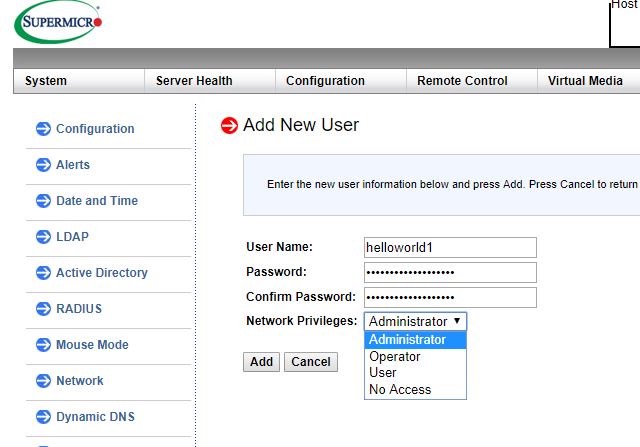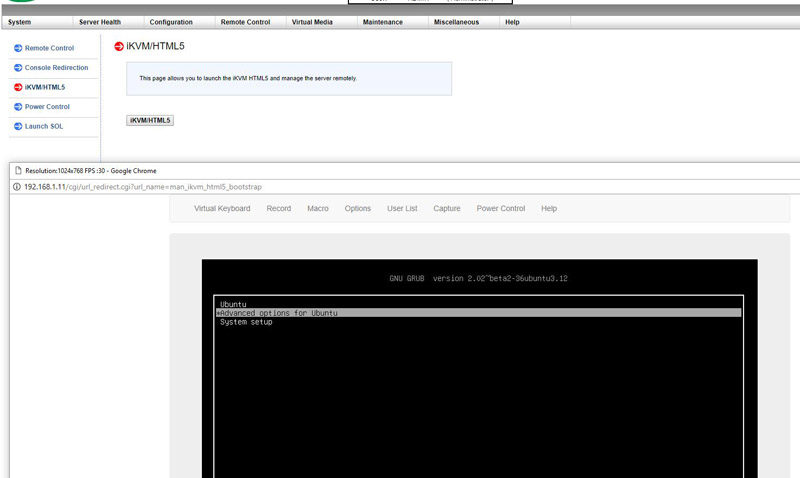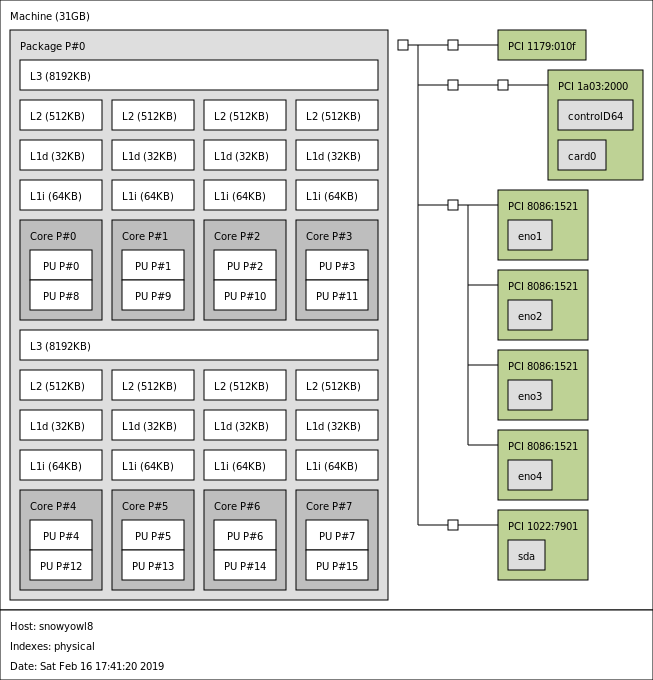Supermicro AS-E301-9D-8CN4 Management
These days, out of band management is a standard feature on servers. Supermicro offers an industry-standard solution for traditional management, including a WebGUI. This is based on the ASPEED AST2500 solution, a leader in the BMC field. The company is also supporting the Redfish management standard. On this server, we see similar features as we would across the Supermicro X11/H11 ranges. That means whether you are using an embedded Intel motherboard or a 4U EPYC storage server, you will have a similar look and feel to the management experience.

In the latest generation of Supermicro IPMI is an HTML5 iKVM. One no longer needs to use a Java console to get remote KVM access to their server.

Currently, Supermicro allows users to utilize Serial-over-LAN, Java or HTML5 consoles from before a system is turned on, all the way into the OS. Other vendors such as HPE, Dell EMC, and Lenovo charge an additional license upgrade for this capability (among others with their higher license levels.) That is an extremely popular feature. One can also perform BIOS updates using the Web GUI but that feature does require a relatively low-cost license (around $20 street price.) That is a feature we wish Supermicro would include with their systems across product lines.
This pricing differential for a serviceable iKVM functionality is a big deal in this segment. Adding a $200 license to a server can add 10% or more in the embedded platform costs. Supermicro’s iKVM feature is extremely popular due to its inclusion with the server.
Supermicro AS-E301-9D-8CN4 Topology
One area that we are keenly aware of today, and will be increasingly so with future multi-chip packages, is system topology.

The AMD EPYC 3251 we are testing is a single die part. Higher-end AMD EPYC 3000 SKUs are dual-die parts where Infinity Fabric bridges the two. PCIe topology is relatively simple here, but that may not be the case for higher-end CPU SKUs. For the Supermicro AS-E301-9D-8CN4, this is a single NUMA node solution. That is important since it is the same topology as the company’s Intel-based solutions. Some in the industry automatically assume that AMD EPYC equates to multiple-NUMA nodes, but here that is not the case. The four to eight core AMD EPYC 3001 series parts are single NUMA node designs.
Next, we are going to look at the Supermicro AS-E301-9D-8CN4 performance before moving on to our power testing and final words.




On every hardware metric it is rather limited: but it has fairly fast CPU cores for it’s power budget.
Like it’s brethren it is very cute and it looks nice sitting on a bench but I have a difficult time understanding why it exists. What am I supposed to use it for?
@emerth industrial applications where you need some compute on the edge such as factories/oil/chemical. From my perspective this is direct competition for the like of HPE Edgeline 1000 type of applications but at a lower cost.
The 40mm fans I don’t quite understand, at 1.5U height it’s ~66mm high so 50mm or even 60mm fans would have been possible. It could also have used the additional height for a top down 80mm or 120mm cooler for low noise applications (and a custom shroud for airflow).
I’m not OP. But this is madness
https://www.reddit.com/r/homelab/comments/c5ssva/a_very_tiny_lab
I ordered one of these from Newegg.
It DOES NOT come with:
1. PCI-E 90 degree riser card
2. ANY hard drive cages – and I have yet to figure out the part number for those
It only comes with one SAS power cable, so you can’t actually hookup 4 drives – only 2… And the cable used isn’t available on Supermicro’s store…
What a MESS.
What a MESS!
Jason, we mentioned in our review that we had a pre-production unit with some parts labeled as optional. I think this is great feedback and will send it to the team. I agree it would be good either to have this as everything in the box or an additional SKU with all of the accessories. Maybe even a note on the product page for optional components like in some other Supermicro servers.
Do you know if it’s works with ESXi 6.7? I know it’s not officially supported yet, but it would be nice to know for homelab purposes.
@Marcelo, yes it working well with ESXI 6.7.
Anyone know where can get the PCI e Riser?
Hello,
I have been looking for a mini homelab server for a while, and I don’t have a choice between the sys-e200 8d, e300 8d / e301 8d?
which would be best for an sccm lab, networking and securty?
Like Jason, I also ordered one of these from Newegg. Mine also DID NOT come with:
1. PCI-E 90 degree riser card
2. ANY hard drive cages
I reached out to SuperMicro support, and got the following part numbers for these:
1. PCI-E Riser card: RSC-RR1U-E16
2. Dual 2.5” drive bay: MCP-220-30101-0N
I will say that so far this server has been fantastic as a light virtualization host.
Thanks Mark. I read this article before your comment and also had communication with Supermicro about it. Part numbers for the cables are:
Thin SATA cable: CBL-0483L
Power cable. Although I don’t know what this is. A y-cable or whatever: CBL-PWEX-0983
It runs much more quiet than i expected. It sits in the next room, just 3m away and i can barely hear it when the door is open. Power usage is only 32W, idling with an AOC-S40G-I2Q 40G card and two SATA SSDs.
One more note: If you’re looking a for a power efficient server for your homelab, don’t be fooled by the TDP value. I own two of these and an E300-D8, which I wanted to try hoping with the lower TDP of 35W (vs. 55W of the Epyc 3251) it would consume less power when idling. The E300-D8 idles at about 36W without PCIe card and with two SATA SSDs
Supermicro seems unwilling or unable to supply the drive cages. I need six. Got one from a shop, ordered another 3, which got cancelled, because of availability. Another official supplier is taking more than two months and says they don’t know why it’s taking so long. On top the product team Supermicro promised to update the product page to list the optional parts two months ago, but didn’t even after reminding them about it. It seems this box doesn’t get any love from them.
I have the same issue no cage only 2 fans supplied & a single Sata Cable to hookup. I am thinking of engineering my own HDD cage. I can do with 2 fans